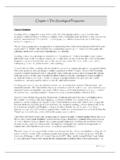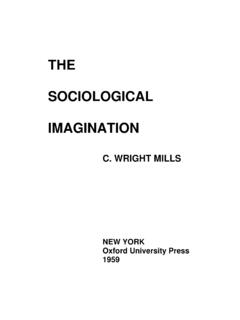Transcription of Chapter 7 Lexical Semantics - Indiana University Bloomington
1 180 Copyright 2019, IGI Global. Copying or distributing in print or electronic forms without written permission of IGI Global is 7 DOI: Semantics is concerned with inherent aspects of word meaning and the semantic relations be-tween words, as well as the ways in which word meaning is related to syntactic structure. This Chapter provides an introduction to some of the main themes in Lexical semantic research, including the nature of the mental lexicon, Lexical relations, and the decomposition of words into grammatically relevant semantic features. The mapping between the Semantics of verbs and their associated syntax is discussed in terms of thematic roles, semantic structure theory, and feature selection. A review of some of the most influential findings in second language research involving both open-class and closed-class lexi-cal items reveals important implications for classroom pedagogy and syllabus design in the domain of vocabulary IS Semantics ?
2 Semantics is the study of how language is used to represent meaning. More precisely, Semantics aims to explain how literal meanings are linguistically encoded and decoded by speakers and hearers. Other approaches to meaning include pragmatics, which deals with how meanings are inferred in relation to context, and semiotics, which is a more general study of how we interpret both linguistic and non-linguistic signs. For example, if one person shows a ring to another, saying Here is the ring , there are several layers of meaning that could be examined. At the level of Semantics , the deictic pronoun here indicates a proximal location; the verb be signifies existence in a location; the determiner the shows that both speaker and hearer have previous knowledge of this ring; and the word ring picks out a particular type of object in the world. At the level of pragmatics, depending on the context, the hearer might infer that this speech act is a proposal of marriage, or a request for a divorce, or a directive to embark upon a magical quest.
3 In terms of semiotics, the ring itself may be understood as a symbol of a bond, alliance, Lexical Semantics :Relativity and TransferDavid StringerIndiana University , USA181 Lexical Semantics or vow, which by extension might signify matrimony, allegiance to a college, or religious authority. In comparison with pragmatics and semiotics, Semantics has a narrower scope of investigation in that it restricts its concern to linguistic aspects of meaning. Within Semantics , there are various theoretical approaches, including formal Semantics , which uses propositional logic to capture relations between linguistic expressions and the things to which they refer, and cognitive Semantics , which sees meaning in language as emerging from general cognitive principles. These important lines of research are beyond the bounds of the current Chapter , which deals with a different aspect of Semantics with direct relevance to the language classroom: Lexical Semantics , the study of how meaning is encoded in words, and how word meaning relates to sentence the following section, fundamental concepts of Lexical Semantics are introduced, including the traditional distinction between reference and sense, the mental lexicon as a network, and the various types of meaning relations between words.
4 Most modern research in this domain focuses on elements of meaning below the word level, and investigates both features inside words as well as features that words can require in their surrounding linguistic context. An overview is given of the fascinating and ongoing debate among researchers concerning how the meanings of words determine syntactic structure. In the second part of this Chapter , several examples of second language (L2) research are presented in order to illuminate how Lexical Semantics might be relevant for language learning in the classroom. Such research addresses questions of how word meanings in a new language are acquired, given that learners initially assume equivalence between words in translation, even though words rarely have the same meaning in two different languages. It is argued that several findings in L2 Lexical Semantics are of direct relevance to teaching practice, materials development, and syllabus MENTAL LEXICON: A WORLD OF WORDSR eference, Sense, and Lexical RelationsAn important traditional distinction in Lexical Semantics , as most influentially articulated by Frege (1980 [1892]) and Saussure (1983 [1916]), is between reference and sense.
5 The reference of a word is the thing, event, or state that it points to in the world. It is what the word denotes, and it is external to the mind. Thus if someone refers to a particular piece of wooden furniture with four legs and a back using the word chair, the reference is to that object in the world. In contrast to reference, the sense of a word is its meaning in relation to the linguistic system of which it is a part, and this meaning is internal to the mind. The precise meaning of the word chair in English is related to other words such as beanbag, bench, pew, seat, sofa, stool, etc. Translational equivalents of words are rarely completely accurate because the precise set of things a word can denote varies from language to language, in part due to this relational aspect of meaning. In a given language, the translation of the English word chair might denote both chairs and stools, or there might be two words corresponding to different types of chair.
6 Moreover, different words or phrases with distinct senses could point to the same individual in the world, for example Bill, Shakespeare, Ann s husband, the author of Hamlet, and the Bard of Avon might all refer to the same person but they carry different meanings. As Frege (1980 [1892]) observed, using two senses to denote the same referent is quite different from a repetition of terms. The planet Venus may be referred to as the morning star or the evening star, but for someone who is unaware that these terms denote the same object, example (1) carries information, while example (2) does Semantics (1)The morning star is the evening star.(2)Venus is distinction between reference and sense has led to two distinct research traditions in (denotational) theories of meaning focus on how words manage to pick out the set of things to which they refer. Formal semantic approaches, such as truth-conditional Semantics ( , Chierchia & McConnell-Ginet, 2000), as well as Montague Grammar (Montague, 1974), are characterized by their use of logic in semantic analysis, and in such frameworks, whether an expression is meaningful depends on whether it is a logical and truthful expression of external reality.
7 For example, in truth-conditional Semantics , nouns and verbs are meaningful because they denote actual entities and situations, respectively. They can either be true or false descriptions of reality. In this tradition, the term sense is restricted to an idealistic notion of word meaning, independent of the variation in speakers minds, such that languages are seen as abstractions over individual differences and the psychological and sociological representa-tions used by a person or population (Lewis, 1972, p. 170).In contrast to denotational theories of formal Semantics , representational theories of Lexical Semantics do not consider any aspect of meaning as external to the mind. On this account, one cannot compare a linguistic representation with reality to determine truth, but only check it against other mental represen-tations of the world. The perception of a chair, in terms of its shape, texture, colors, perspective, etc.
8 , is created in the mind, and the categorization of this object is likewise a cognitive process. The emphasis in Lexical semantic research is on words as concepts, and on the lexicon as a means of relating phonological, syntactic, and conceptual representations. Jackendoff (1989, p. 74) interprets this distinction between (i)meaning in terms of external reality and (ii) meaning in cognition by drawing on Chomsky s (1986)constructs of E-language (external, language as a social abstraction outside the individual mind, outthere in the world) and I-language (internal, language as a cognitive system). Denotational theories canbe thought of as E- Semantics and representational theories as I- Semantics , respectively. In this sense,the focus of this Chapter is squarely on I- Semantics , and on theories of Lexical Semantics that have arisenin this account of Lexical Semantics must be somehow embedded in a more general theory of the mental lexicon, so let us begin with the question: What is a Lexical item?
9 While it is conventional to think of a word as a unitary entity, many researchers in Lexical Semantics assume some version of Jackendoff s (1997) theory of parallel architecture, according to which a Lexical item is a relation, rather than a thing. At a minimum, a word consists of a phonological representation, linked to an independent syntactic rep-resentation, linked to an independent conceptual representation. Moreover, the generation of phonologi-cal, syntactic, and conceptual forms occurs in modular fashion, so that, for example, only phonological primitives and combinatorial rules are used to create phonological representations. A Lexical item is created through correspondences between these distinct representations, as in (3)183 Lexical Semantics (3) (adapted from Jackendoff, 1997, pp. 39, 100)This conception of representational modularity at the Lexical interface with other cognitive systems is compatible with evidence from speech processing research.
10 When we hear a word, we search to retrieve it from our mental storage system first by paying attention to phonology, not Semantics . Words that begin with the same sounds are primed , that is, they are activated in lexicon so as to enable fast retrieval and integration into syntax. For example, in an early experiment by Swinney (1979), when participants heard the sentence Because he was afraid of electronic surveillance, the spy carefully searched the room for bugs, they showed evidence that at least two interpretations of bugs ( microphones and insects ) were primed, despite only one being pragmatically as words stored in the mental lexicon may be phonologically primed in a way unrelated to mean-ing, they may also be subject to semantic priming, depending on their conceptual relations to other words. For example, in a word recognition task, a response to a target ( , boy) is faster when it is preceded by a semantically related prime ( , girl) compared to an unrelated prime ( , telephone).


